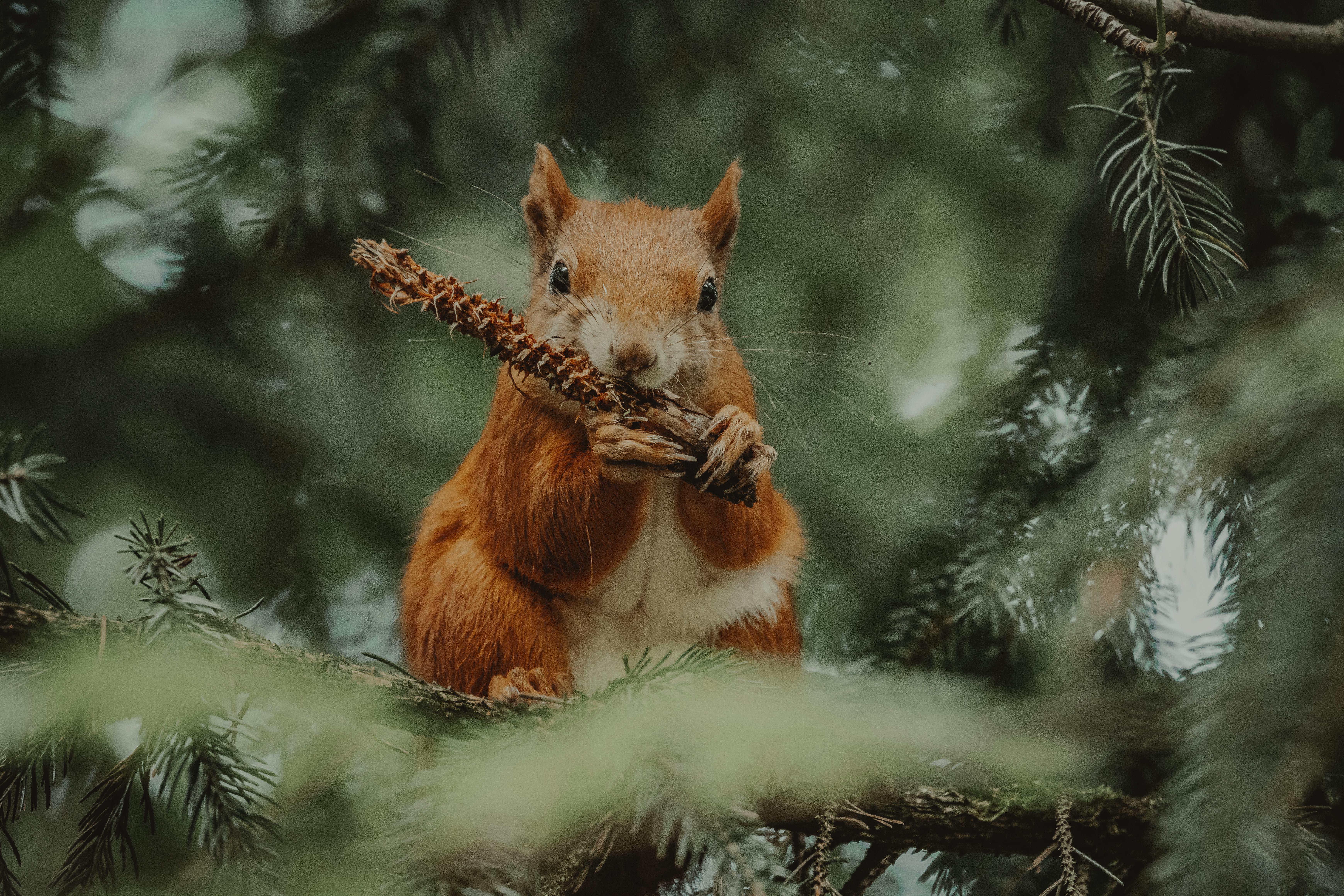Ball pythons are a popular choice of pet snake for many reptile enthusiasts. They are relatively docile, and their small size makes them ideal for those who don’t want a large pet snake taking up too much space. One important factor to consider when caring for a live/” title=”How Long Do Ball Pythons Live”>ball python is how often to feed them. Depending on the age and size of your ball python, you may need to feed it anywhere from once per week to once every two weeks.It is recommended to feed an adult ball python one appropriately sized pre-killed rodent every 5 to 7 days. Younger ball pythons may need to be fed every 5 days, while older pythons may only need to be fed once a week.
How to Tell if a Ball Python is Hungry
It can be difficult to tell when your ball python is hungry, as they don’t show many outward signs. However, there are some subtle clues that can help you better understand your pet’s needs. By knowing these signs, you’ll be able to provide the best care for your ball python and ensure they’re getting the proper nutrition.
One of the most common indications that a ball python is ready for a meal is their increased activity level. When they’re hungry, they’ll often become more active than usual and may even begin searching around their enclosure for prey. This behavior can be especially common during the evening when these snakes are naturally more active.
Another sign to watch for is changes in coloration. When a snake is hungry, it may become darker than usual as it attempts to absorb more heat from its environment. This change in color should only last until the snake has been fed and should go away shortly after eating.
Finally, another sign that your ball python may be ready to eat is if it begins striking at objects or attempting to bite its tail or other parts of its body. This behavior usually occurs when a snake has not eaten in awhile and thinks it may have found food.
By paying close attention to these signs, you’ll be able to tell when your ball python needs food and make sure it’s getting enough nutrition on a regular basis.
Typical Feeding Habits of Ball Pythons
Ball pythons are carnivorous animals and generally feed on small mammals, such as mice and rats. They may also feed on other animals, such as birds and frogs. In captivity, ball pythons typically feed on pre-killed prey items. These can include frozen rodents, which can be purchased at pet stores or online. It is important to thaw the frozen prey item before feeding it to the snake.
When feeding a ball python in captivity, it is important to ensure that the size of the prey item is appropriate for the size of the snake. Feeding a large prey item to a smaller snake can be dangerous and may result in injury or death. If you are uncertain about what size prey item to feed your snake, then it is best to consult with an experienced reptile veterinarian.
In addition to providing pre-killed prey items, some captive ball pythons may also accept live prey items from time to time. However, this should only be done with caution and under close supervision. Live prey items can cause injury or death to your snake if not handled correctly. Additionally, it is important to research the species of live prey you are offering before feeding it to your ball python.
Overall, ball pythons typically feed on small mammals and other animals in their natural environment. In captivity, they usually consume pre-killed frozen rodents or occasionally live prey items under close supervision. It is important that the size of the food item is appropriate for the size of your snake and that you research any live prey before offering it to your pet ball python for their safety and wellbeing.
Types of Food
Ball pythons are carnivores, so their diet should consist of mostly animal-based proteins. Common prey items for ball pythons include mice, rats, gerbils, hamsters, guinea pigs, and chicks. Live or frozen prey items should always be offered as they are the most nutritious option. Ball pythons can also be fed pre-killed prey items such as mice or rats that have been thawed and heated to body temperature. Commercially available reptile diets can also be fed as a supplement to fresh prey items. These diets typically come in the form of pellets or canned food. Always ensure that any food item you offer is free from parasites and diseases that could harm your pet.
In addition to pre-killed or live prey items, some ball pythons may accept fruits and vegetables as occasional treats. Be sure to offer only safe fruits and vegetables such as apples, strawberries, blueberries, bananas, bell peppers, squash, sweet potatoes, and green beans. It’s important to remember that these treats should only make up a small portion of your pet’s diet; they should never replace fresh prey items as the primary source of nutrition.
Why is it Important to Follow the Right Feeding Schedule for Ball Pythons?
Feeding a ball python correctly is essential for its health and wellbeing. A proper feeding schedule will help your pet snake stay healthy and grow normally. It is important to feed them the right amount of food at the right times, and to ensure that their diet is balanced and nutritious. By following a regular feeding schedule, you can make sure that your ball python gets all the nutrients it needs.
Ball pythons typically eat one or two small meals every week, depending on their size. The food should be appropriately sized for the age and size of your pet snake. If you are feeding them rodents, it should be no larger than the width of your snake’s head. Too large of a meal can cause digestive issues, while too small of a meal can lead to malnutrition or an inability to properly digest food.
It’s also important to note that ball pythons do not need to eat live prey. If you choose to feed them live prey, make sure that it is appropriate-sized for your snake and that it has been fed an appropriate diet prior to being offered as food. Live prey may also pose a risk of injury or illness if not properly managed. As such, most owners opt for pre-killed or frozen rodents when providing meals for their ball pythons.
If you are concerned about whether your ball python is eating enough or too much, speak with your veterinarian about setting up an appropriate feeding schedule for your pet snake. Your veterinarian can recommend a variety of diets and help you determine how much and how often you should feed your pet snake in order to keep them healthy and happy.

What Happens if You Don’t Feed Your Ball Python Enough?
If you don’t feed your ball python enough, it can lead to serious health implications. Not providing your ball python with enough food can cause it to become malnourished, meaning it may not receive the nutrients it needs to stay healthy. Malnutrition can lead to a weakened immune system, making your ball python vulnerable to diseases and other health problems. It is also important to note that overfeeding can be just as detrimental for your snake’s health.
Without an adequate diet, your ball python may also start losing muscle mass and have difficulty maintaining its body temperature. If this happens, you may notice that your snake becomes sluggish and less active than usual. Additionally, its skin won’t be as bright or vibrant as when it is healthy and well-fed.
When feeding your ball python, make sure that the food provided is appropriate for its size and age. It is recommended that adult ball pythons should be fed every seven to ten days, while younger snakes should be fed more frequently — every five to seven days — in order to ensure they are getting the nutrition they need. The type of food you feed your snake should also depend on its age: young snakes will need smaller prey such as mice or small rats while adults will require larger prey such as rabbits or guinea pigs.
In conclusion, not feeding your ball python enough can lead to severe malnutrition and other health issues. To keep your snake in optimal health, make sure you provide a balanced diet that is appropriate for their age and size.
Overfeeding a Ball Python
Overfeeding a ball python can cause a variety of health issues. These can include obesity, digestive problems, skin infections, and organ damage. When a ball python is overfed, they become prone to metabolic diseases such as diabetes or gout. Additionally, the excess weight puts extra strain on their organs and can cause them to become stressed and lethargic. Overfeeding may also increase the risk of regurgitation or intestinal blockage which can be life-threatening for the snake.
It is important to provide your ball python with a healthy diet and to feed them only what they need. They should be offered food only once every 7-10 days, depending on their size and activity level. Always make sure that the food you offer is appropriate for your snake’s size and age. Additionally, you should monitor your snake’s weight regularly to ensure that it is not gaining too much weight too quickly. If you notice that your snake is gaining excessive weight, reduce their feeding frequency or offer smaller meals more frequently.
Overall, it is important to remember that overfeeding can have serious consequences for your ball python’s health and wellbeing. You should always monitor their diet closely and make sure not to offer them more food than what they need. By doing so, you will be helping to ensure that your pet stays healthy and happy for years to come!
Establishing a Regular Feeding Schedule for Your Ball Python
Having an established feeding schedule for your ball python is important. It helps your pet stay healthy and active, as well as providing mental stimulation. Ball pythons are carnivores, and they should be fed a variety of prey items such as mice, rats, and chicks. Knowing when and how often to feed your ball python is key to keeping them healthy and happy.
When first starting out with your ball python, it is important to establish a regular feeding schedule. You should start off by offering your snake two meals per week, spaced out evenly about four days apart. As they grow older, you can gradually increase the frequency of their meals up to once per week. Most adult ball pythons do well on one meal per week, but if you notice that your snake is losing weight or appears to be underfed then you may need to adjust the frequency of their feedings accordingly.
When it comes to choosing the right prey items for your ball python, there are a few factors to consider. The size of the prey should be appropriate for the size of the snake; it should not be too large or too small relative to the size of its body. It is also important to make sure that you are offering a variety of different items in order to provide your pet with adequate nutrition. Young snakes may require more frequent feedings than adults in order for them to meet their nutritional needs.
It is also important to consider how much food your snake needs at each mealtime. Generally speaking, most adult ball pythons will do fine on one mouse or rat every seven days or so; however this can vary depending on the size of the individual snake and how active it is. Young snakes may need more frequent feedings in order for them to grow at an appropriate rate.
Finally, it is important that you stick with a regular feeding schedule as much as possible; any deviance from this routine could cause stress or anxiety in your pet which could lead to health problems down the line. If you find yourself having difficulty adhering to this schedule due to work or travel commitments then make sure that someone else can take care of your snake while you are away.

Conclusion
Maintaining a healthy diet for your ball python is essential for its long-term health and wellness. The frequency at which you should feed them will depend on their age, size, and activity level. Juveniles should be fed every 5-7 days, while adults should be fed every 7-10 days. It is important to monitor your snake’s weight to ensure that it is not over or underweight. Keep in mind that more frequent feedings are not necessarily better for your ball python and may lead to health issues such as obesity or respiratory infections. Additionally, it is important to provide a wide variety of foods in order to ensure that your snake receives all the necessary vitamins and minerals they need.
When in doubt about what and how often you should feed your ball python, consult with an experienced reptile veterinarian or breeder who can provide insight into the best feeding practices for your particular snake. With proper nutrition and care, you can ensure that your ball python leads a long and healthy life.




